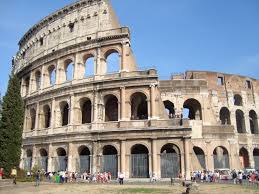This week we studied the Ancient Greeks. So much history and culture to cover. My surname, Siracusa, is actually a Greek city-state in Sicily. My first name Dina derived from the Greek Name, Constantina-from the ruler Constantine. So, even though my family has always identified with our Sicilian/Italian roots, we probably have more Greek ancestors than anything else.
So, where do we even start with a country that has played such an integral in civilization as we know it? Let's start with the basics. Ancient Greece is where we found the foundations of Philosophy, Poetry, Government, Architecture, and Mathematics.
Ancient Greece is considered by most historians to be the foundational culture of Western Civilization. Greek culture was a powerful influence in the Roman Empire, which carried a version of it to many parts of Europe. Ancient Greek civilization has been immensely influential on the language, politics, educational systems, philosophy, art and architecture of the modern world, particularly during the Renaissance in Western Europe.
Citizens living in countries that employ democracy have Greece to thank, for Greeks pioneered beliefs in government by the people, trial by jury, and equality under the law. The ancient Greeks pioneered in many fields that rely on systematic thought, including biology, geometry, history, philosophy, and physics. They introduced such important literary forms as epic and lyric poetry, history, tragedy, and comedy. In their pursuit of order and proportion, the Greeks created an ideal of beauty that strongly influenced Western art.
The cuisine of Greece is known throughout the world. It bears the fingerprints of many cultures that came into contact with Greece-Turkish, Roman, Middle Eastern. It was Archestratos in 320 B.C. who wrote the first cookbook in history. Greece has a culinary tradition of some 4,000 years. Ancient Greek cuisine was characterized by its frugality and was founded on the "Mediterranean triad": wheat, olive oil, and wine, with meat being rarely eaten and fish being more common. This trend in Greek diet continued in Roman and Ottoman times and changed only fairly recently when technological progress has made meat more available.
This week, we cooked three dishes. Our first dish, Yemista, consists of baked tomatoes stuffed with rice, zucchini, dill, and mint. The juicy tomatoes were savory and delicious. The dill added a unique flavor which complimented the fresh vegetables and rice. Our second dish was a first for me. Octopus Stifado, whole octopus stewed in wine, tomatoes, vinegar, onion, and aromatic herbs. I must say, this was actually my favorite dish of all. The octopus was so tender and absorbed the wine and vinegar beautifully. Our final dish was a classic Santorini Style Shrimp. We simply baked the shrimp in garlic, wine, lemon, feta, and tomatoes. We finished with fresh flat leaf parsley and mint. It was light and delicious.
















































